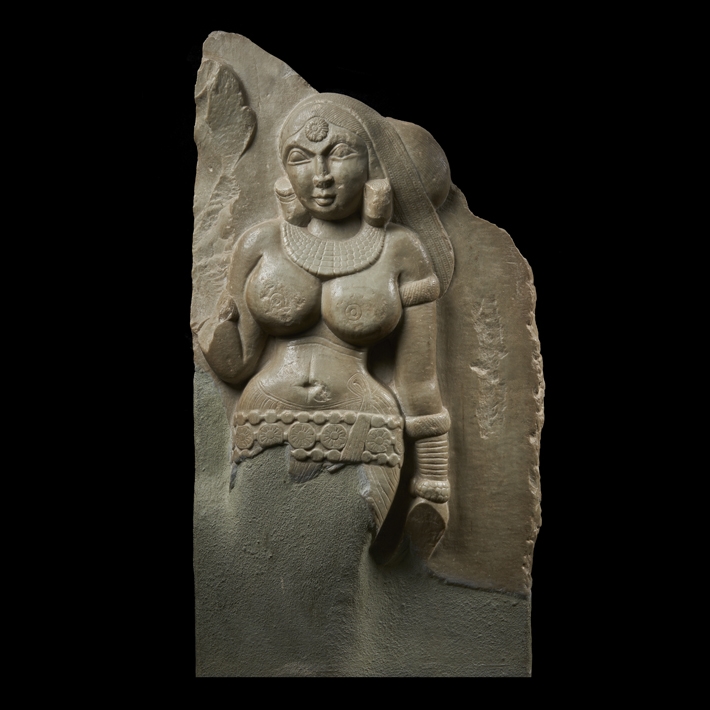13.Yakṣī

- Mid-2nd century BCE
- Amaravati mahācaitya, Guntur district, Andhra Pradesh
- ASI Archaeological Museum, Amaravati, Guntur district, Andhra Pradesh
One of the greatest early stūpas in ancient Andra to feature personified lotus-offering female nature spirits (yakṣī) was Amaravati. The yakṣī seen here formed part of the first sculptural program to embellish Amaravati's Great Stūpa, executed around 150 to 100 BCE. The figure, sculpted in shallow relief on a limestone panel, has a startling quietude and grace. She faces left, and likely held a lotus bloom, now missing, the quintessential Buddhist offering. Such figures honored the presence of the Buddha, at this time only represented in symbolic form, as a throne or footprints, and often guarded by a rearing cobra. Depictions from other early stūpa sites show yakṣī standing atop mythical creatures, such as makaras, affirming their identity as nature spirit personifications.

 Previous
Previous